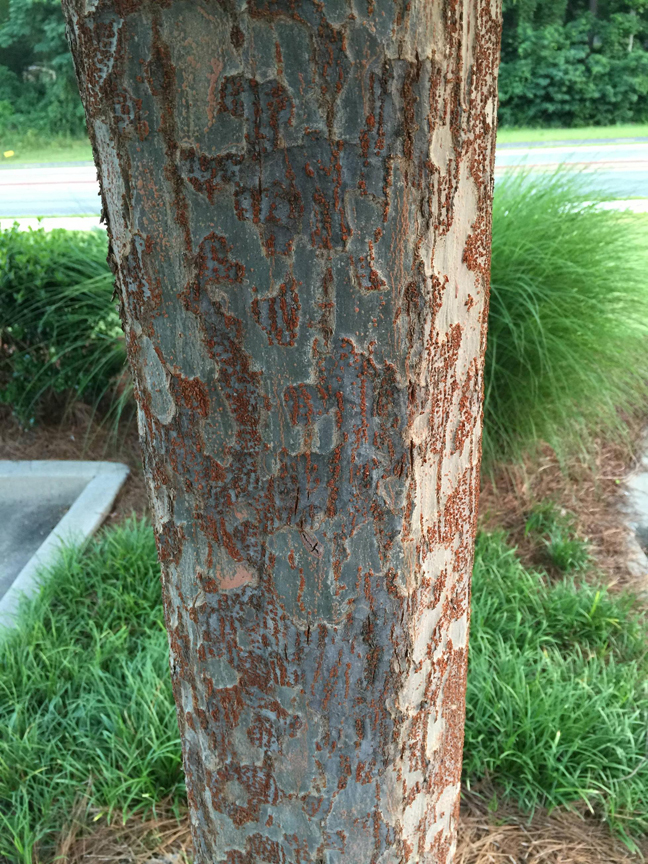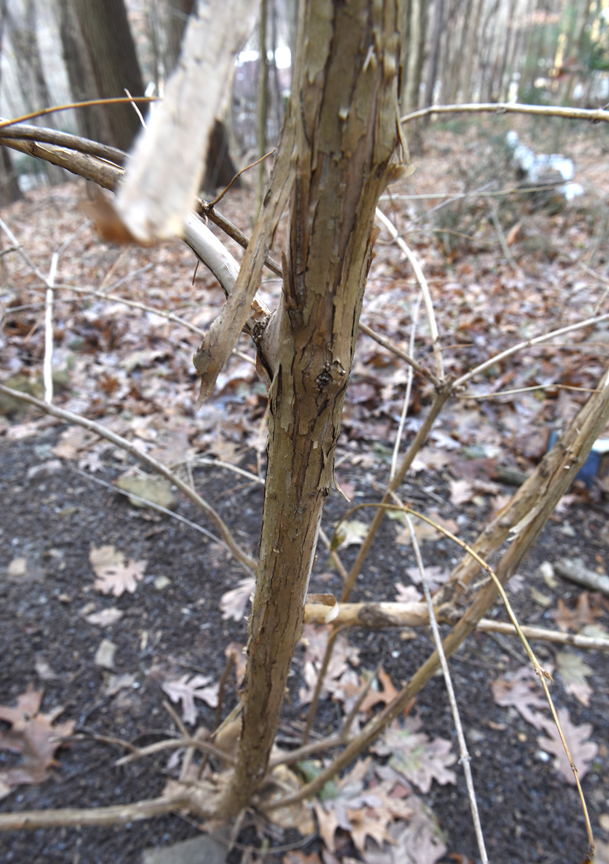Top 9 winter interest plants
Posted on: December 19, 2019 | Written By: Doug Oster |
What is a gardener to do during the gray days of winter? For many of us, it’s all about planning. This is the perfect time to scout around for plants that provide winter interest to the landscape. Put them on your list of things to get in the ground this spring, and you’ll be rewarded for decades to come, making the season a little more bearable.
Shrubs
Witch hazel
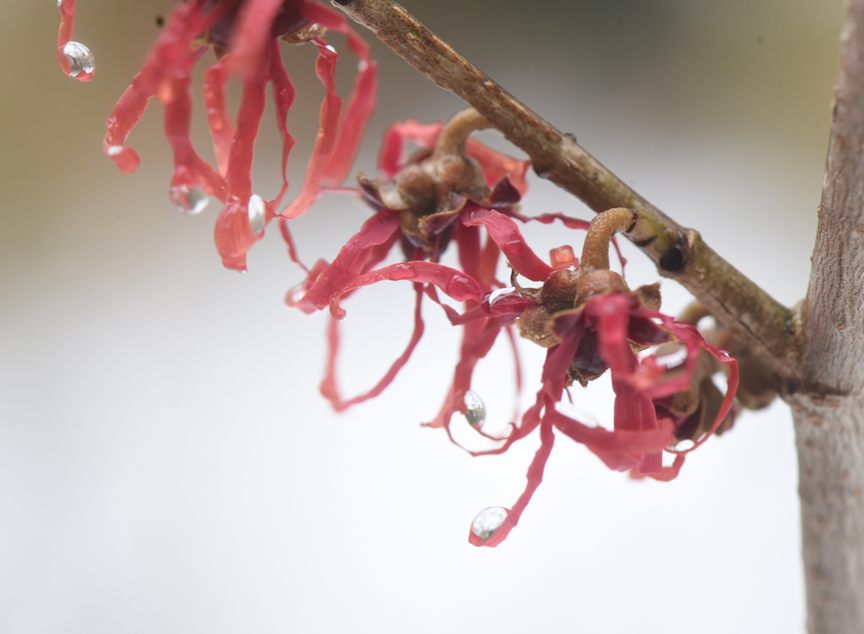
This red witch hazel blooms mid-winter.
This native shrub has varieties that can bloom anywhere from October into late winter with yellow or red flowers. It is such a wonderful surprise to see the flowers appear in January or February, giving us hope that spring is right around the corner. Witch hazel is easy to grow in the sun or as an understory shrub. In my garden the deer have been known to nibble on the buds, so protection is in order, like a physical barrier or by using a repellent like Bobbex.
These long-lived plants can get 20 to 30 feet tall, but ‘Little Suzie’ only grows four to five feet tall and wide.
Red twig dogwood
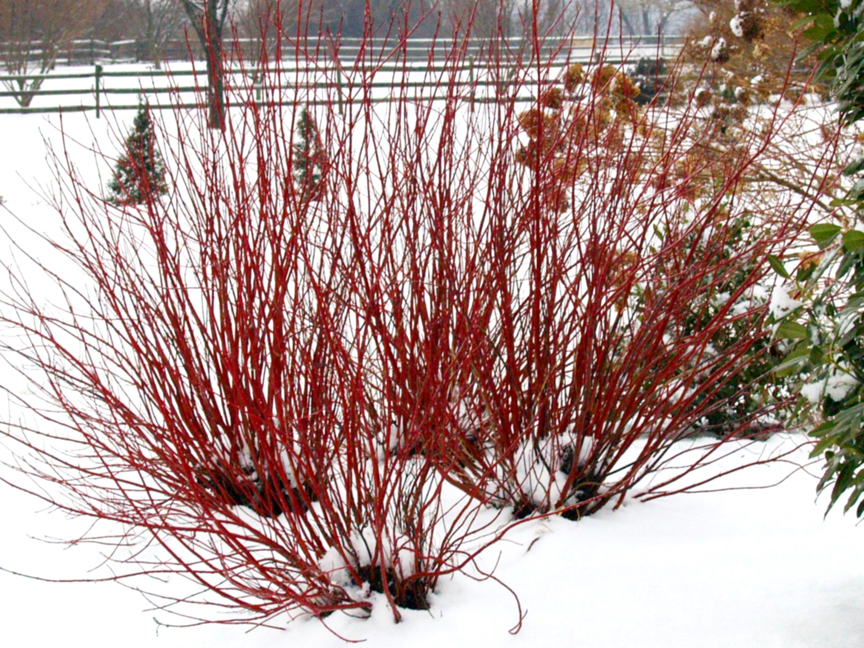
Red twig dogwood ‘Arctic Fire’ from Proven Winners ColorChoice Shrubs has great color in the winter. Photo courtesy of Proven Winners ColorChoice Shrubs.
Not to be confused with dogwood trees, red twig dogwoods (Cornus stolonifera) are multi-stemmed shrubs that have either bright red or yellow stems, which make a perfect presentation against white snow. The shrub is simple to grow in partial to full sun, with many cultivars to choose from, even some with variegated foliage for spring and summer interest. ‘Arctic Fire’ is a favorite from Proven Winners ColorChoice Shrubs and available at local nurseries, too.
Winterberry holly

Winterberry shrubs put on quite a show in front of Phipps Conservatory and Botanical Gardens.
One of the more spectacular displays of winterberry is in a mass planting in front of Phipps Conservatory and Botanical Gardens. In the wild, the native shrub loves moist acidic soil, but it is adaptable to a wide range of growing conditions in the landscape. Winterberry prefers full sun, but the deciduous plant will put on berries in part sun too. ‘Berry Heavy’ is a great cultivar. ‘Berry Heavy Gold’ produces unique gold-colored berries. ‘Berry Poppins’ only reaches about four feet tall and wide for gardeners who don’t have room for full-sized cultivars that can be twice that size. All are available from Proven Winners ColorChoice Shrubs, and some are sold at local nurseries.
Plants with exfoliating bark
Paperbark maple
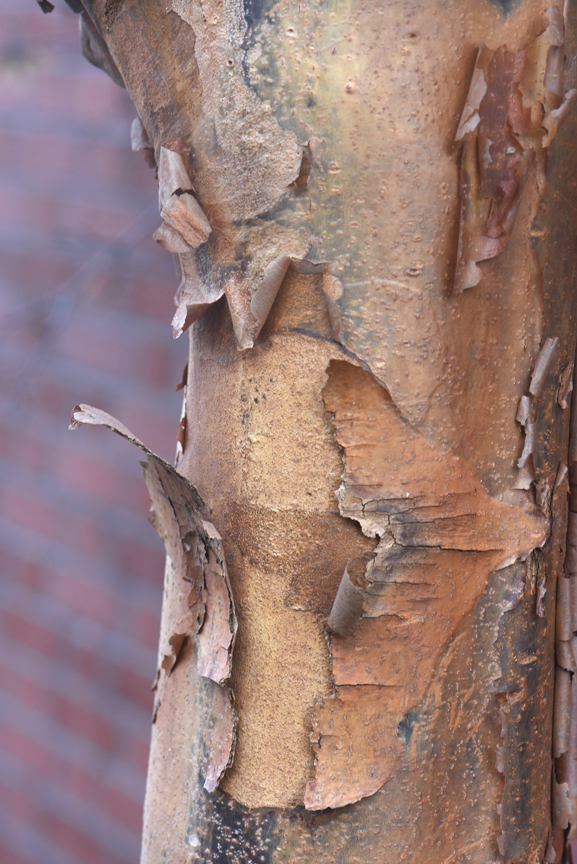
Paperbark maples are one of the plants that stands out in the winter on Chatham University’s campus which is also an arboretum.
A mature paperbark maple has peeling cinnamon-colored bark, which is showcased best during the winter, especially against white snow. This medium-sized shade tree will reach about 30 feet tall and spread anywhere from 15 to 25 feet wide. It’s happy in full sun to part shade and is a carefree grower.
Chinese lacebark elm (photo in gallery)
I first saw the unique Chinese lacebark elm tree on the campus of Chatham University, which is also an arboretum. The fast-growing tree with multi-colored bark, and it can be grown in a wide range of conditions. This big, beautiful tree can grow to 50 feet. It has good resistance to Dutch elm disease and is also resistant to Japanese beetles and elm leaf beetles. There are many other fascinating trees and shrubs at Chatham; it’s one of Pittsburgh’s hidden gardening treasures.
Heptacodium (photo in gallery)
Heptacodium (or seven-son flower) is an easy-to-grow, underused fall blooming shrub with tan, exfoliating bark. I’ve got three in my garden, and they love growing in the shade of the forest, but I’ve also seen one at Mellon Park in full sun. They have pretty white, fragrant flowers in September that fade to pink and can get 20 feet tall.
Dawn redwood
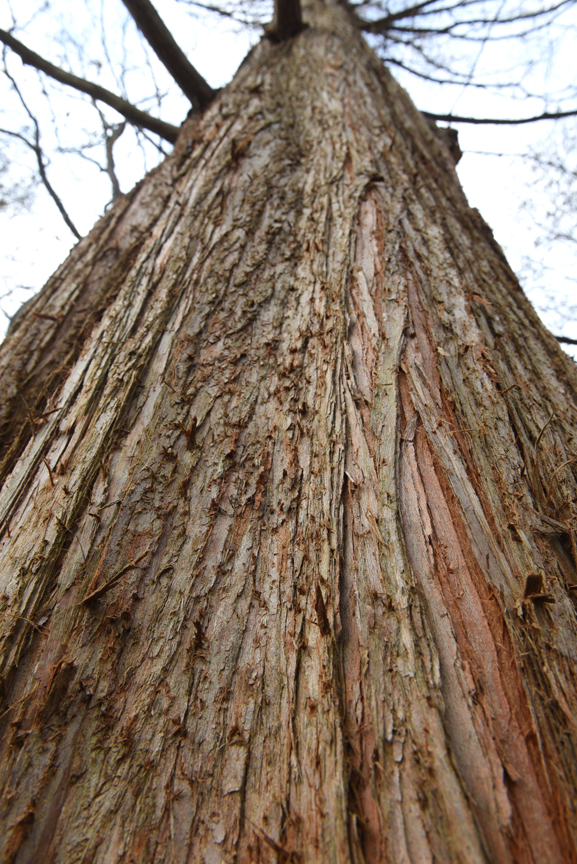
Dawn redwoods are tall trees with wonderful bark.
I once had an argument with a friend about who had the “biggest” dawn redwood between us. After a certified arborist from Davey Tree came out to measure, we both ended up winning. My tree was taller, and his was wider. This species was thought to be extinct but was found growing in a Chinese valley during World War II. This deciduous conifer sheds its leaves (which resemble needles but are soft) in the fall to reveal a spectacular orange bark. A tall tree reaches 100 feet, and it’s a fast grower and unique in the landscape. There are smaller cultivars like ‘Miss Grace,’ found at Bender’s Farm and Greenhouse in McDonald. This article is filled with that cultivar and other unique varieties of trees and shrubs.
Perennial favorites
Helleborus niger
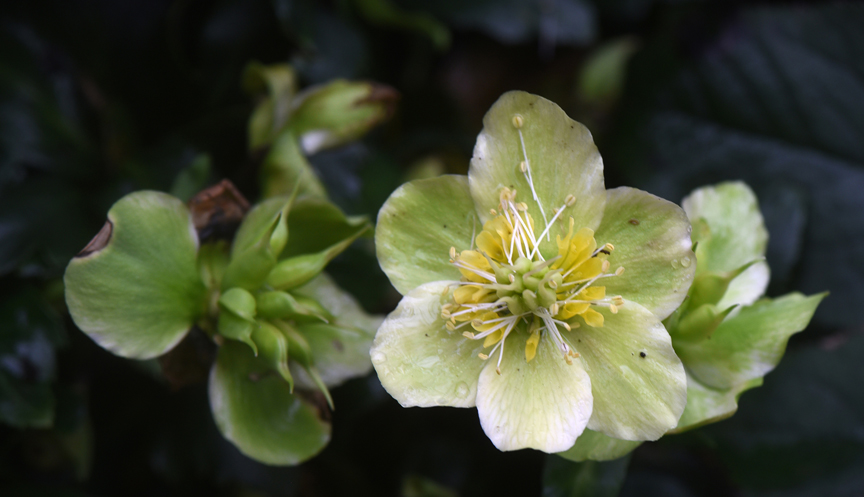
Hellebore blooms are one of the joys of winter.
Of all the amazing perennials growing in my landscape, this hellebore stands out as it begins to bloom in November and continues through the winter. During a January thaw, the honeybees will visit looking for something to eat. The buds start with a pinkish hue and open to pure white, fading often back to pink. The evergreen foliage is a great plus, too. Choose carefully when planting the hellebore; it loves part shade and resents being moved, often waiting a few years to bloom again. These plants are actually available right now at nurseries, sold as holiday plants. They could be babied along on the windowsill until spring and then planted in the garden.
Ornamental grasses
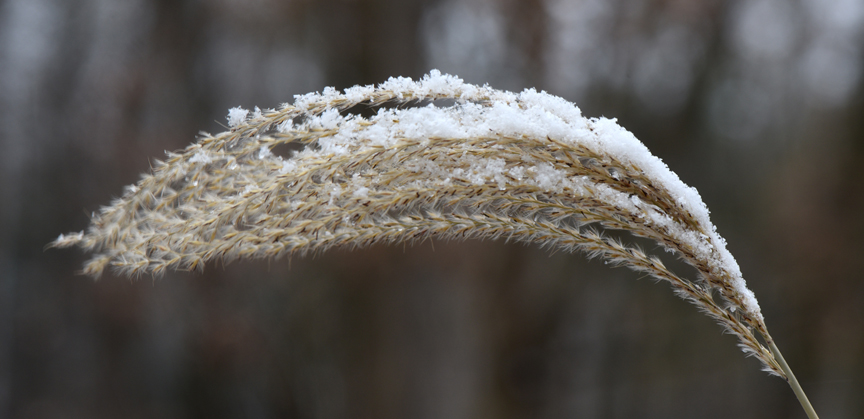
Ornamental grasses have great winter interest.
There are countless ornamental grasses that, when left standing in the winter, put on quite a show. Regardless of size or shape, they are perfect deer-resistant additions to the landscape and will grow just about anywhere. They love full sun though. ‘Morning Light,’ ‘Karl Foerster’ and ‘Pink Hair Grass’ are just a few fun varieties to plant.
Researching these plants now and planting them in the spring will lead to a landscape that is beautiful all four seasons of the year.
Doug Oster is editor of Everybody Gardens, a website operated by 535Media, LLC. Reach him at 412-965-3278 or doster@535mediallc.com. See other stories, videos, blogs, tips and more at everybodygardens.com.
More from Everybody Gardens
Pros pick their favorite plants for 2020.
Video- Winter indoor gardening with microgreens.
How to grow peanuts.
